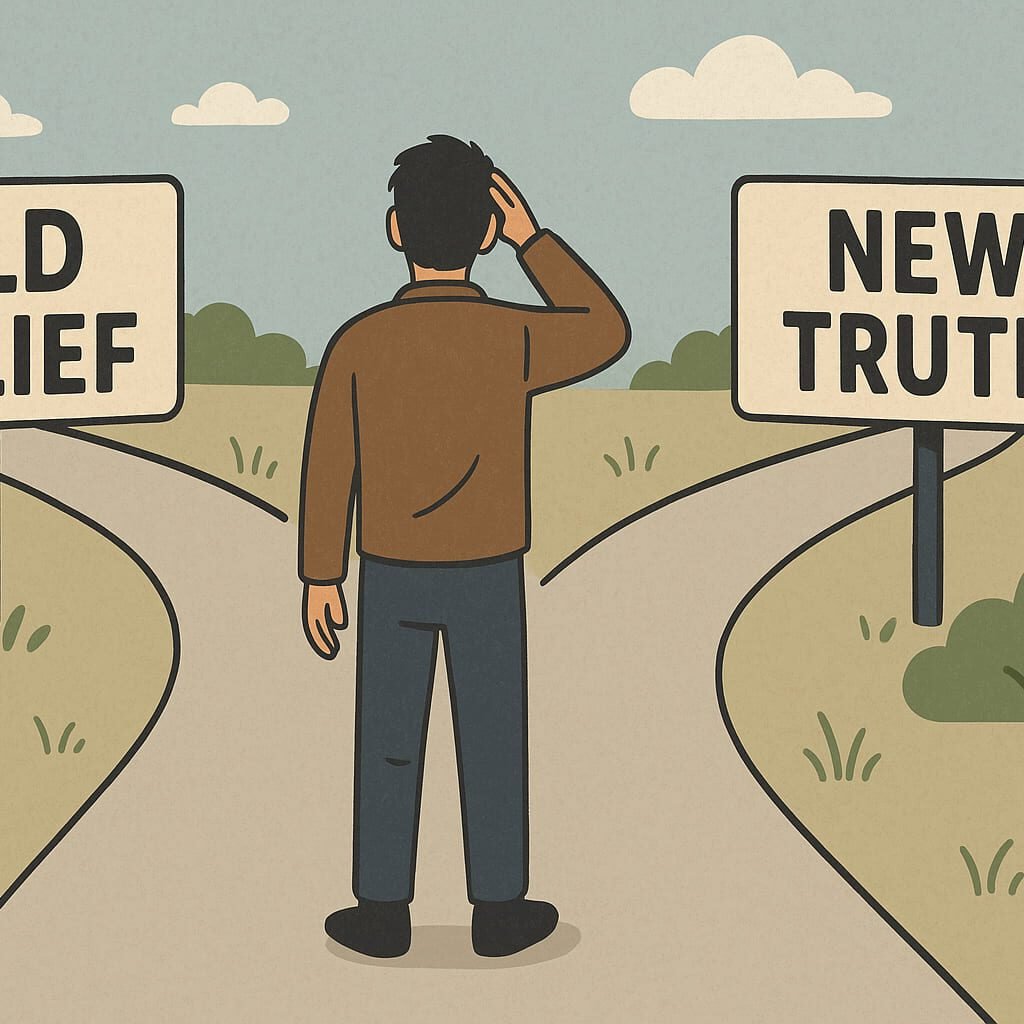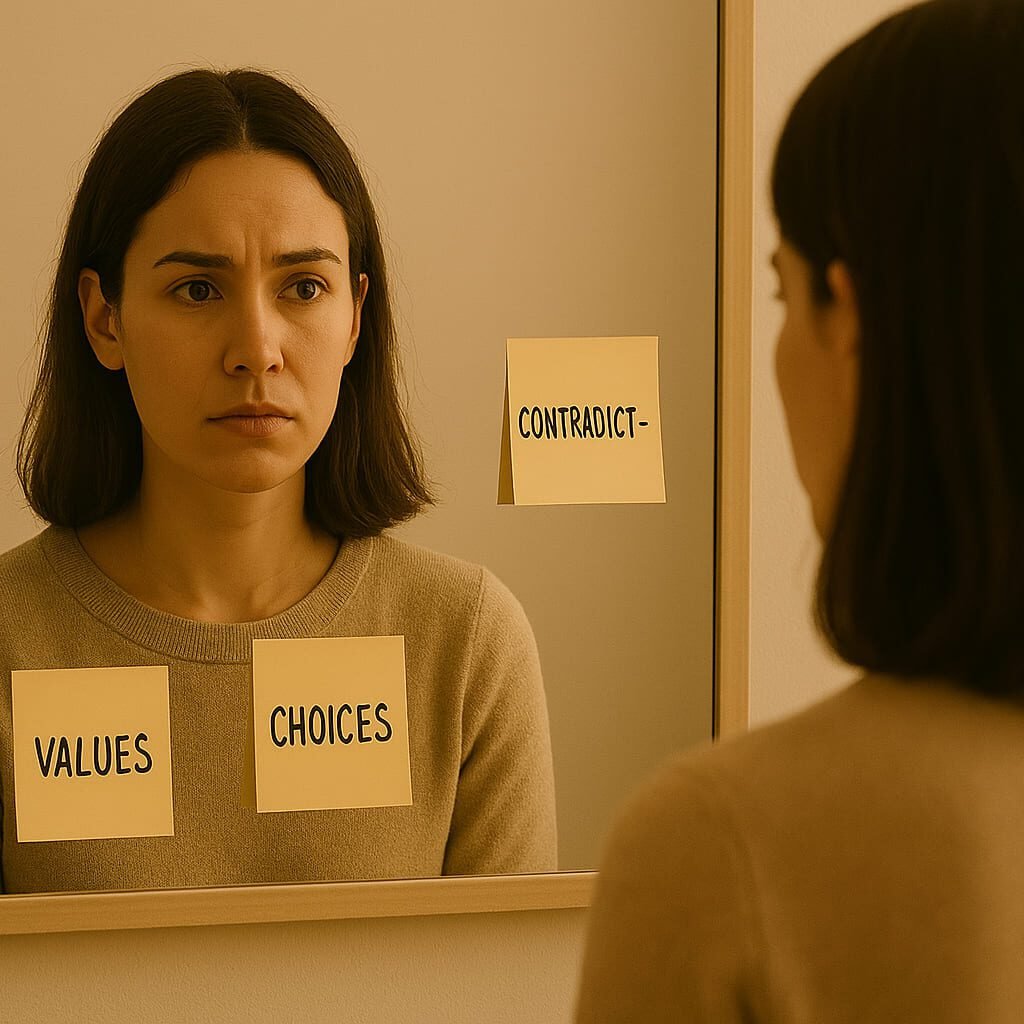Change is rarely comfortable. Whether it involves shifting a personal belief, breaking an old habit, or adjusting to a new environment, something inside us resists. That tension you feel in moments of discomfort is often the result of cognitive dissonance—a psychological state that explains why meaningful change feels so hard, even when we know it is necessary.
Understanding cognitive dissonance not only helps us be more compassionate toward ourselves but also equips us with tools to move forward more intentionally and with less inner conflict.
What Is Cognitive Dissonance?
Cognitive dissonance is the mental stress experienced when a person holds two or more contradictory beliefs, values, or actions simultaneously. This inner conflict causes discomfort, leading us to find ways to reduce it—often unconsciously.
According to the American Psychological Association, cognitive dissonance arises when our actions do not align with our beliefs, prompting us to either rationalize the behavior or change the belief to restore internal harmony.

Why Change Triggers Dissonance
When we face change—especially if it challenges long-held beliefs—our minds struggle to reconcile the new information with our existing worldview. This psychological conflict is not a sign of weakness. It is a natural function of the brain trying to maintain equilibrium.
As illustrated by recent neuroscience research, dissonance activates regions in the brain related to emotional processing and error detection. The discomfort is real, not imagined.
For instance, imagine someone who values health but continues smoking. The conflict between behavior and value creates dissonance. To reduce the tension, the person may downplay the risks or convince themselves that the damage is already done.
Everyday Examples of Cognitive Dissonance
Understanding how cognitive dissonance shows up in daily life can make it easier to notice and address. Some common examples include:
- Saying you support environmental causes but continuing to use plastic bags
- Believing in honesty while telling a small lie to avoid conflict
- Wanting to save money but making impulsive purchases when stressed
In each case, the gap between intention and action leads to internal stress. As detailed by Healthline, recognizing these moments can increase self-awareness and support healthier decision-making.

How We Cope With Dissonance
People often reduce cognitive dissonance in four main ways:
- Changing beliefs to align with behaviors
- Changing behaviors to align with beliefs
- Adding new thoughts that rationalize the dissonance
- Minimizing the importance of the conflict
The strategy chosen depends on which option causes the least disruption to our identity or worldview. Unfortunately, not all coping methods support growth. For example, rationalizing harmful habits often keeps us stuck.
In Why We Crave Validation and How to Find It Within, PsycheShare explores how seeking external approval can create internal conflict when it clashes with our authentic self. Recognizing these dissonant moments can help us build a more self-aligned way of living.
Why Dissonance Can Be a Catalyst for Growth
Although dissonance feels uncomfortable, it is often a signal that growth is underway. It pushes us to reflect, question, and adjust. This discomfort is not the enemy—it is the bridge between the old and the new.
In the article How to Bounce Back After Life Throws You a Curveball: Building Resilience, readers are reminded that resilience grows when we face discomfort with awareness and intention. Cognitive dissonance, in this context, is not a barrier but an invitation to evolve.
Practical Strategies for Managing Cognitive Dissonance
You can reduce the emotional discomfort of dissonance while staying open to change. Here are supportive steps:
- Pause and reflect when you notice emotional resistance or avoidance
- Journal your thoughts to identify conflicting beliefs
- Practice self-compassion instead of self-judgment
- Seek values-aligned actions rather than quick emotional relief
- Work with a therapist, especially when dissonance stems from trauma or identity shifts
Therapeutic frameworks like Solution-Focused Therapy help individuals move forward by identifying personal strengths rather than revisiting old pain. This can be especially effective when you feel stuck between two opposing beliefs or desires.
Final Thoughts: Change Requires Courage and Compassion
Struggling with change does not mean you are failing. It means you are human. Cognitive dissonance is part of the psychological architecture of growth. By becoming aware of its role, we can move from confusion to clarity—with patience, self-respect, and inner strength.
If you find yourself standing between who you have been and who you are becoming, remember that dissonance is simply the discomfort of transformation. You are allowed to be uncertain. You are allowed to take your time.



Add a Comment